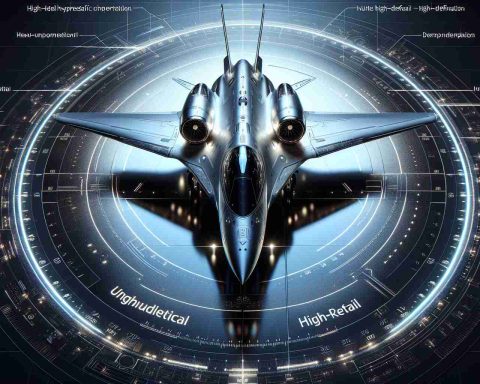The sanctions imposed by Western nations following Russia’s military actions in Ukraine have had a profound effect on the country’s defense industry, particularly concerning the Su-57 stealth fighter program.
Newly uncovered data from Russian electronics manufacturer Mikropribor suggests that critical parts necessary for the Su-57 are in short supply due to restricted access to Western technology. Essential machinery like the Siemens KLE 360 CNC machine and the MPPU-50 modules have become increasingly hard to procure. These components play an indispensable role in radar calibration and testing, which are vital for the aircraft’s operational effectiveness.
In a bid to sidestep these growing challenges, Russia is reportedly attempting to acquire components through indirect channels, yet this approach has not only augmented delays but also underlined the necessity of international collaboration in modern military development. Earlier reports indicated that Russia may even be pursuing unauthorized purchases from foreign suppliers, including obtaining German equipment through covert means, further complicating the logistics of production.
The ongoing sanctions suggest that Russia will face continued difficulties in manufacturing the Su-57, which has been lauded as a competitor to the U.S. F-35 Lightning II. With production lagging significantly behind expectations, the situation serves as a reminder of the critical role that global supply chains play in defense manufacturing and the potential vulnerabilities that arise from geopolitical conflicts.
The Ripple Effects of Sanctions on Global Defense Industries
The sanctions imposed by Western nations on Russia following its military actions in Ukraine have extended far beyond the immediate political ramifications, significantly impacting not only Russia but also the wider global defense landscape. As the conflict exacerbates, the implications of these sanctions are felt in various communities, industries, and even nations worldwide.
One of the most striking effects of these sanctions is the vulnerability of defense supply chains. The Su-57 stealth fighter program represents a crucial part of Russia’s military ambitions, designed to challenge Western aerial supremacy. However, data reveals that access to vital components has been severely restricted. Essential parts manufactured in the West, such as advanced electronics and precision machinery, are becoming increasingly scarce. This scarcity not only hampers Russia’s ability to produce cutting-edge military technology but also illustrates the intricate web of international dependency that defines modern defense industries.
The sanctions impose significant limitations on countries that could be potential allies or suppliers to Russia. Countries like China, which might be expected to provide support, are wary of facing secondary sanctions from the West, leading to a hesitancy in forming defense partnerships. This dynamic is reshaping alliances and fostering uncertainty in global defense markets, pushing nations to rethink their alliances and procurement strategies.
Moreover, the controversy surrounding unauthorized procurement practices has raised alarms globally. Reports have surfaced that Russia is attempting to procure Western technologies indirectly, through third parties, which raises ethical questions about the responsibility of countries involved in such illicit trade. This not only poses legal risks for these nations but could also affect international relations and trade agreements.
In contrast, some nations see a silver lining in the sanctions imposed on Russia. For example, countries like India and Brazil, which have had lingering defense cooperation with Russia, are now considering diversifying their defense procurements. This may lead to increased investments in their domestic defense industries or closer ties with Western defense manufacturers, subsequently altering the landscape of global military partnerships.
Additionally, the disruption in Russia’s defense manufacturing is likely to stimulate innovation in the West. Countries such as the United States and members of the European Union may increase their defense expenditure and accelerate their own production capacity, especially as they anticipate a potential rise in global tensions. As nations look to fortify their military capabilities, new technologies are likely to emerge, changing the face of modern warfare.
However, the long-term impacts of such market volatility are still uncertain. The attempts by Russia to acquire essential electronics and machinery through covert methods raise questions about future enforcement of sanctions and the ability of the West to monitor and prevent such transactions. This ongoing cat-and-mouse game complicates the dynamics of international trade and accountability, revealing deep-seated vulnerabilities in global defense strategies.
In conclusion, the sanctions on Russia are reshaping not only its military capabilities but also those of nations worldwide. As countries navigate the challenges posed by these sanctions, the ripple effects will be felt in communities invested in defense industries, altering procurement practices, international partnerships, and global power dynamics for years to come. For more information on this topic, visit Defense.gov.
The article has been updated: 2024-11-05 15:08
Here are some suggested related links for your post title “Challenges in the Production of Russia’s Su-57 Fighter Jet”:
1. Defense.gov – The official website of the U.S. Department of Defense, providing insights into aerospace advancements and military technologies.
2. Russian Aviation – A comprehensive resource for information on Russian aircraft and aviation developments, including news on the Su-57 fighter jet.
3. Janes – A leading provider of defense and security information, covering the latest developments in military aviation, including analysis on fighter jets like the Su-57.
4. FlightGlobal – An authoritative source of aviation news and analysis, offering coverage of military aircraft and challenges in production.
5. Defense News – A publication focused on defense and military affairs, covering global defense issues and technologies including the Su-57 program.
6. Army Times – A news outlet dedicated to military personnel and issues, providing insights into military technology and the challenges therein.
7. Air Force Magazine – A publication of the Air Force Association that explores advancements and challenges in military aviation.
8. The Drive – A platform providing news and insights on automotive and military technologies, including well-researched articles on aircraft like the Su-57.
9. Aerospace Technology – A site featuring developments in aerospace, including detailed insights on military aircraft production challenges.
10. Global Security – A resource for military and security information, offering comprehensive data on military systems and aircraft programs globally.
The article has been updated: 2024-11-06 02:04
What are some of the key challenges faced in the production of Russia’s Su-57 fighter jet?
The production of Russia’s Su-57 fighter jet faces several significant challenges. Firstly, there are issues related to technological capabilities, as the development of advanced materials and stealth technologies has proven to be complex. This has led to delays in the aircraft’s operational rollout. Additionally, the Russian defense industry has struggled with supply chain issues, particularly in sourcing high-quality components, which affects the production timeline and costs.
Moreover, geopolitical factors play a role; international sanctions have limited Russia’s access to certain technologies and partnerships necessary for the advanced production of the Su-57. Lastly, budgetary constraints and shifting defense priorities within Russia can also impact the resources allocated for the ongoing development and production of the fighter jet, further complicating its status as a leading fighter in Russia’s military arsenal.

















